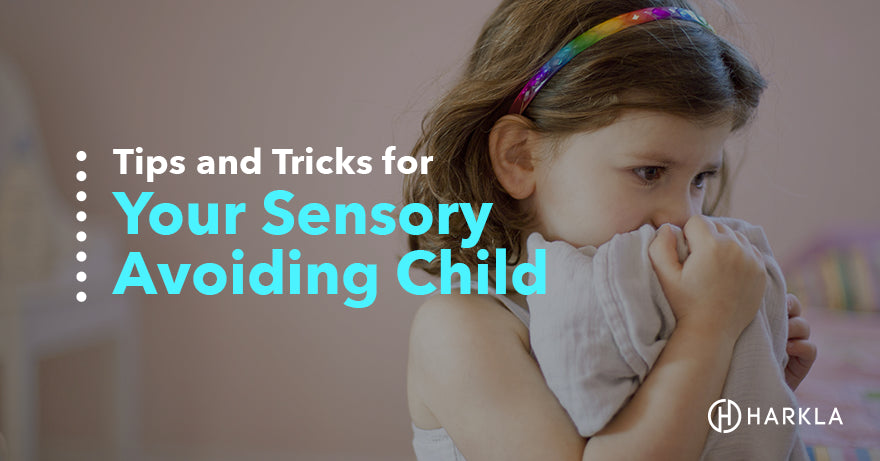Your Cart is Empty
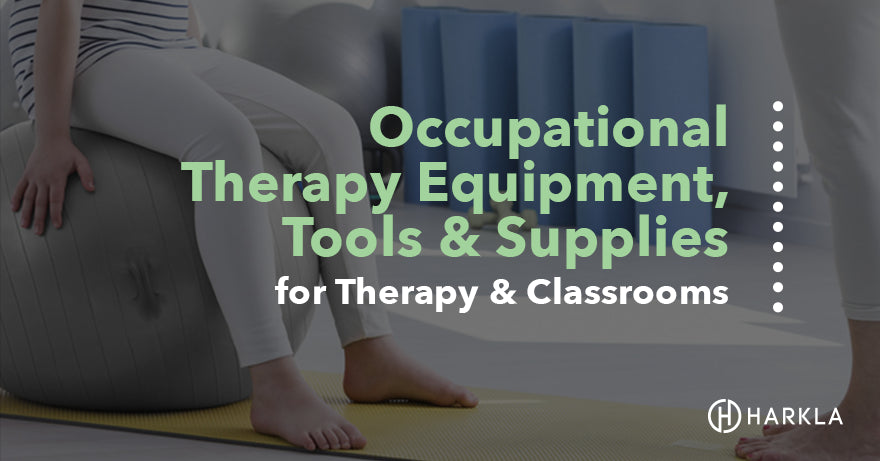
Whether you are an occupational therapist, special education teacher, or simply a teacher who is trying to make their classroom more sensory friendly, there is a wide variety of occupational therapy equipment that can help a child with autism or sensory processing challenges reach their fullest potential.
Often, it can become overwhelming to determine which products might be the most beneficial. It's important to consider the child’s unique sensory, emotional, and attentional needs to determine which sensory equipment will work to serve them best.
This article will give you a thorough overview of the most common and effective tools that occupational therapists use to meet the special needs of children. We will cover occupational therapy equipment overall, but with special notes about how they can be used in the classroom environment as well.
If you read our other articles about tools for school, fidgets, and creating a sensory informed classroom, this article will add to your knowledge so you can best support your classroom needs.
The main goal of most sensory seating equipment is to provide extra sensory input to your child through their joints. This will often result in better attention and focus. Below are some seating options you can choose from. Ultimately, the seat you choose should be what works best for your child. You may want to involve them in the shopping process!

A standard therapy or exercise ball is often the most common option you will see in schools, as they are readily available and very affordable.
There are also therapy ball chairs, which provide more stability if your child is especially wiggly! In addition, you might see a tactile sensory ball used, as this can provide even more input for your child.
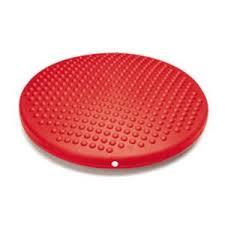
A wiggle cushion is another common option. This can be used in two different ways, which makes it flexible and cost-efficient. Often, the cushion is simply placed on the child’s seat, again providing sensory input to your child.
This cushion can also be placed on the floor, allowing your child to stand on it as he or she engages in classroom activities. This is a great option for children who are sensory seekers and might benefit from changing positions throughout class.

Wobble chairs can be used as another substitute for a standard desk chair. These are best suited for children who like to move around in their seats or chairs, as this allows them to safely “wobble” around. Again, this is another great option for children who are sensory seekers and need that movement in order to succeed academically.
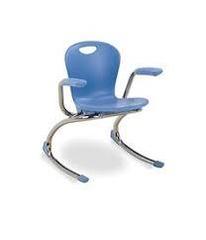
An option that is more organizing and calming to the sensory system is a rocker chair. This is another great substitute for a traditional desk chair and allows the child to rock back and forth at their own pace, which provides more input to the sensory system and often results in a calming effect.
Some children with sensory processing challenges or other special needs may struggle with handwriting tasks.
The school setting is an ideal place to explore tools that might assist your child with writing. There are several options available, each with a slightly different purpose.
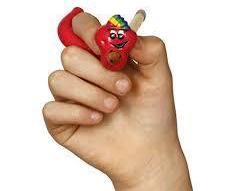
A writing rascal is a small tool that fits on your child’s pencil. These are often motivating for children to use, due to the silly face and different color options. A writing rascal helps promote a tripod grasp, which is the grasp we use when writing.
The Handiwriter is another option that also will help facilitate the grasp pattern children need in order to successfully write. This tool goes one step further and assists with pulling the pencil into the correct position, which might be needed for some children.

Pencil weights are a great option for children who have handwriting that is messy or difficult to read. The extra weight helps to provide more sensory input to your child’s hand. This helps their hand and finger muscles “wake up,” which assists them with better focus and can also help them write for longer periods of time.
Children with special needs often struggle with endurance when it comes to writing tasks. A slant board can help with this by placing less strain on their shoulder, arms, and hands. This also helps make writing more comfortable by promoting good posture and the angle of the board puts the child’s hand in the ideal position for writing.
Another common handwriting issue is spacing between words. A finger spacer is a tool that can assist your child in learning the correct spacing between words. It also assists in helping children write in the correct direction (left to right). Check with your child’s school occupational therapist to determine the correct size finger spacer for your child’s needs.
Fidget tools are a great way to assist your child with concentration and self-regulation in the classroom setting. In many classrooms today, all children are provided with a fidget option to promote these skills. There are several options for fidgets however, most teachers prefer those that will not distract the child or their fellow classmates. Below are some of the most common and effective options.

The tangle is an excellent fidget toy that is both quiet and helpful. It allows the child to bend and play in order to receive some extra sensory input. It also keeps hands busy and is small enough to be used under a desk.
A fidgipod is a tool that is able to be placed directly on the child’s desk. This is convenient for the child and provides very little distraction. It provides tactile input to the child, allowing for better concentration and regulation.
There are several options for therapy putty. Putty comes in different forms, including options for color, effects, and consistency. Some children prefer putty that is easier to mold, while others crave putty that requires a lot of heavy work. In addition, the various color options provide a visual component, which can be very appealing to the child’s sensory system. This product line also has options for color changing as the child molds and plays with the putty, which offers yet another helpful sensory component.
Mesh and marble fidget toys have recently become more popular. Many school occupational therapists recommend these due to their small, compact size. In addition, they are free from noise and provide a great way to keep hands and fingers busy.
Weighted products are often prescribed for children with autism spectrum disorder or sensory processing disorder as a way to calm and organize the sensory system. In school, these can be so effective at assisting students with reaching academic success.
Your child’s school occupational therapist will prescribe these items if indicated and will be able to select the appropriate weight for your child.

A weighted vest may be used as a way to help your child receive sensory input throughout their day. There are several different options and in today’s market, they are made as stylish and comfortable as possible.
Children who use a weighted vest usually wear the vest for certain time periods throughout the day, which is done for safety and effectiveness.
A weighted lap padis another option that will assist your child with remaining calm and organized in class.
Harkla’s weighted lap pad also includes dots on the fabric design, which provides extra tactile sensory support.
Our lap pad is even available as an adorable weighted lap dog. Check out our newest weighted lap pad option!
The typical school day includes natural transition times, for example, the start of the day or recess time. Children with autism or sensory processing difficulties often struggle with these transitions. It is especially important to provide accommodations so the transitions go as smoothly as possible. Below are a few ideas to assist with transitions in school.
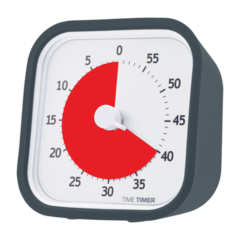
The Time Timer is a tool that allows children to visualize how much time is remaining for a specific activity. It is a great option because it can be used with children of all ages, including those who can’t tell time. The timer includes a red disk that gradually fades away, allowing children to physically see how much time is left.
The time tracker is similar to the time timer because it allows children a visual reminder of how much time is left. This tool goes one step further and also provides a sound component, by providing a sound cue as time goes on.
Transition objects may be helpful for some children and can also provide the added benefit of providing some organizing sensory input when carried around. A transition object often provides the child with comfort and predictability throughout their day. Our weighted lap animalmakes the perfect transition object.
It is common for children with sensory processing disorder to seek out objects to chew on. There are so many options to assist your child with this needed sensory input in a manner that won’t be disruptive to their school day.
Textured "chewys" are a helpful way for your child to receive the oral input they are seeking. The textured option provides additional sensory support! These are small and can be easily stored or carried around in your child’s pocket so they can use it when needed.

There are also several options for chewelry, which most often come as a bracelet or necklace that your child would wear. Take a look at this chewelry necklace and chewelry bracelet! It’s important to consider your options for color, texture, and material used. You might notice that your child prefers a certain type of texture or material. Most likely there is a chewelry tool available to meet your child’s particular needs!
For those children who may be sensitive to others seeing their chewy tool, there are more discrete options. One possibility is this chew brick. This sensory tool can be placed on the end of a pencil and your child can either remove it or leave it on the pencil when needing to use it.
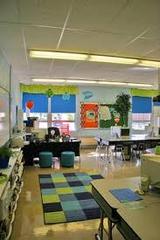
There are several environmental supports that can be utilized to assist your child with the effects of over-stimulation within the classroom setting. Classrooms can often become busy and chaotic throughout the day and this might cause your child to feel overwhelmed or become dysregulated if it overloads their sensory system. Here are some options that can be implemented within the classroom to assist with this.
Most classroom lightsare fluorescent and can even cause glare or flicker, which can easily lead to overstimulation. Many classrooms today are opting to use light filters, either throughout the entire classroom or in specific parts of the room. If these can’t be used widely in your child’s classroom, these would still be beneficial to use in a designated portion of the room for those students with sensory processing concerns.
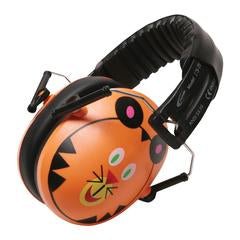
The noise level and intensity can change throughout the day in each individual classroom. However, there are certain times of the day where noise might be more intense.
Your child also might have difficulty blocking out noises or other distractions occurring in their classroom environment. Noise-canceling headphones might be a helpful option if this is the case for your child. They can be used during specific times to assist your child with concentration and focus.
To assist all children with attention, concentration, and emotional control, many schools have implemented sensory areas into their classrooms. These areas can be especially helpful for children with autism spectrum disorder or other sensory processing difficulties. The areas are often set up in a corner of the room and children are allowed to use either during set times or when they need a sensory break. Here are some items that are helpful when putting together a sensory area in the classroom.
For seating, bean bag chairs are often the most common piece of equipment used in sensory areas. When children sit in these, pressure is applied to all portions of the body, producing a calming effect.
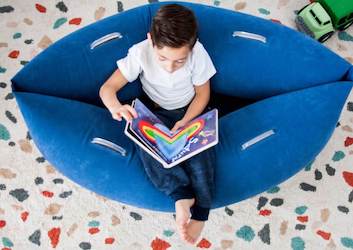
Another option for sensory seating is an inflatable pea pod, like the Harkla Hug.
For those children who need to release energy or for those who are generally sensory seekers, a mini trampoline can be a helpful addition to a sensory area. This provides needed input and is small enough to fit in most sensory areas.
Tactile options, such as a sand tray or textured objects can be a great way to provide needed tactile input. Kinetic sand is a great option for sand trays as it has a sticky texture that prevents most messes. Objects such as this textured cube are also helpful, as they provide input and allow children to explore what helps them feel calm.
A body sock is a great way for children to receive input that will make their bodies feel calmer and more organized after use. These are easily stored and can be pulled out to use when needed. They come in different sizes and colors and provide an enjoyable, active way for children to get the input they need.
In today’s occupational therapy equipment market, there are countless options available in terms of tools to assist children with being successful in the school setting. Since most of these tools are sensory-based, it is important to have a good understanding of your child’s specific sensory needs. Your child’s occupational therapist will be able to help you with this so that your child will be given the most appropriate accommodations.
Remember to visit Harkla’s blogto learn about more tools and strategies to help your child!
References
American Occupational Therapy Association (2009). Position Paper: Providing occupational therapy using sensory integration theory and methods in school-based practice. American Journal of Occupational Therapy, 63(6), 823-842.
Watling, R. & Hauer, S. (2015). Effectiveness of Ayres Sensory Integration and sensory-based interventions for people with autism spectrum disorder: A systematic review.American Journal of Occupational Therapy, 69(5), 10-22.
Comments will be approved before showing up.
